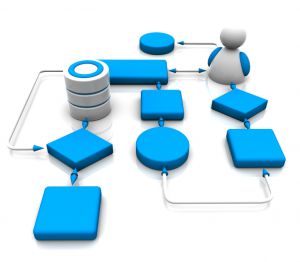 It’s not uncommon to find large and small companies either using multiple separate systems or using Excel Spreadsheets and emails to run the business. Most likely, what you’ll find at these companies are employees relying heavily on their emails to track and manage important files and information, miscommunication between departments, inaccurate and outdated data being shared, and more inefficiencies.
It’s not uncommon to find large and small companies either using multiple separate systems or using Excel Spreadsheets and emails to run the business. Most likely, what you’ll find at these companies are employees relying heavily on their emails to track and manage important files and information, miscommunication between departments, inaccurate and outdated data being shared, and more inefficiencies.
As per our previous blog on the “Dangers of Running a Business solely on Microsoft Office tools”, companies are likely to experience the following if they rely heavily on Excel spreadsheets and other Microsoft Office tools;
- Data loss and corruption; Spreadsheets are known to become unstable the more information is added to them.
- Typos and other errors; Sometimes, small typo errors can be difficult to catch but in the long run can cause major problems and headaches.
- In most cases, these spreadsheets are being shared between various departments. What can happen is that various versions of the same file can be passed around and saved by each department. At this time, different information is travelling from person to person, which can also cause serious problems in the future.
We do realize, however, that change is not always easy for employees and for management in any company and implementing new processes or procedures and implementing new systems is difficult and time consuming. However, change is also inevitable. The business world is constantly evolving and companies should always be ready to adapt in a moment’s notice. So, before getting overwhelmed by the costs involved or the time and effort involved in this finding solutions to current inefficiencies at your business and implementing those solutions, think about the benefits and cost and time savings in the future.
What are your next steps?
Once management understands or realizes their main challenges and problems, it’s now time to gather all your key employees, from each department and write down their processes and day-to-day tasks. This not only allows management to fully understand what their teams are doing and how they are doing it, but also to help properly document important processes.
Next, it’s a great idea to share this documentation with the whole management team, business consultants, IT consultants and top department heads and determine if teams are working with the best and most efficient processes. If not, now is the time to go through each process and find solutions to challenges and better ways of doing things. In many cases, simply by implementing one system for all departments, like a complete ERP solution, with specific rights and permissions can solve a whole lot of headaches and improve efficiency right from the get-go.
In this case, with ONE software system, using ONE database, all employees will have access to important, accurate information. No need to go through hundreds of emails per day or find the latest Excel spreadsheets to find information related to products, sales, etc. This saves a lot of time, effort and critical mistakes!
So, if you are looking to increase data accessibility and visibility, reduce errors, increase efficiency and improve communication company-wide, contact our consultants today!

 For many business owners or managers, making the decision to implement a new software system is a difficult one to make. Oftentimes, the changes and risks that come with a software implementation can discourage those business managers who are looking to streamline their company’s processes and improve overall efficiency with a new system. There’s a ton of information out there on the advantages of using an efficient, up-to-date
For many business owners or managers, making the decision to implement a new software system is a difficult one to make. Oftentimes, the changes and risks that come with a software implementation can discourage those business managers who are looking to streamline their company’s processes and improve overall efficiency with a new system. There’s a ton of information out there on the advantages of using an efficient, up-to-date  Any kind of benefit has an impact, small or large, on a business. Today’s article will list some tangible and intangible benefits executives and managers will see once their business implements an ERP solution, like
Any kind of benefit has an impact, small or large, on a business. Today’s article will list some tangible and intangible benefits executives and managers will see once their business implements an ERP solution, like 